What is a walk-behind tractor and what does it look like?
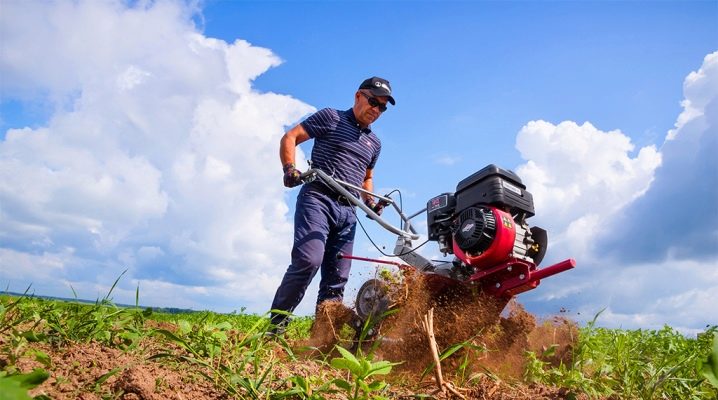
Motoblock is one of the most popular and demanded technical means in the whole world. Its use helps to solve many small problems in agriculture and some other industries. Nevertheless, many people who could potentially use it, still do not really understand its purpose and doubt the need to buy it. So that you clearly understand whether you need such a unit on the farm, it is worth considering in detail its features and potential scope of application.
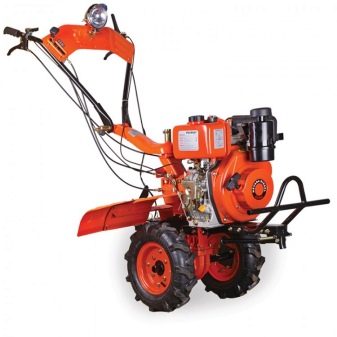
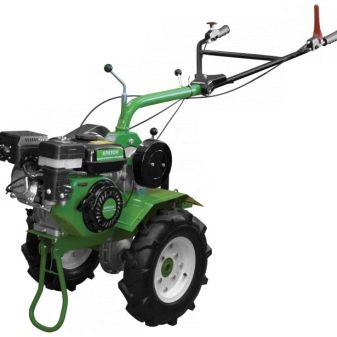
General description and history of occurrence
Best of all, the concept of a walk-behind tractor is revealed by its old names, widely used in Russian until the 80s of the last century: a pedestrian, small-sized or single-axle tractor. From the outside, it looks like a kind of two-wheeled wheelbarrow with handles, which must be driven. Only a walk-behind tractor, unlike a wheelbarrow, can usually "help" the operator in his movement thanks to the built-in low-power engine. Such a device cannot be called self-propelled, since, due to only two wheels on the sides, it cannot move without additional support in the form of an operator, at the same time it is not driven exclusively by human power.
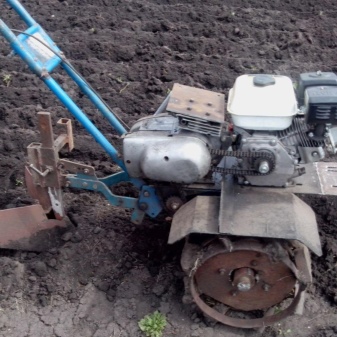
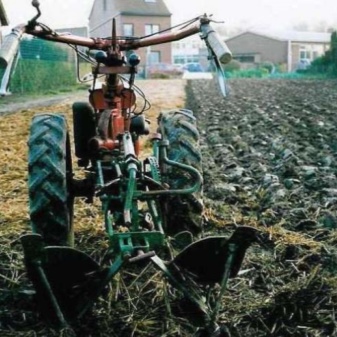
Due to its relatively small size and inexpensive low-power engine, such a "tractor" is much cheaper than a full-fledged, although productivity, of course, is also noticeably reduced. However, for small farms, this solution can be very beneficial. It is worth noting that, depending on the potential tasks, such a unit can be either tiny (no larger than an average lawn mower and with a one horsepower engine), or really resembling a small tractor with a capacity of up to 10 horsepower. If we talk about agriculture, then the use of large motoblocks is considered appropriate when processing an area of up to four hectares.
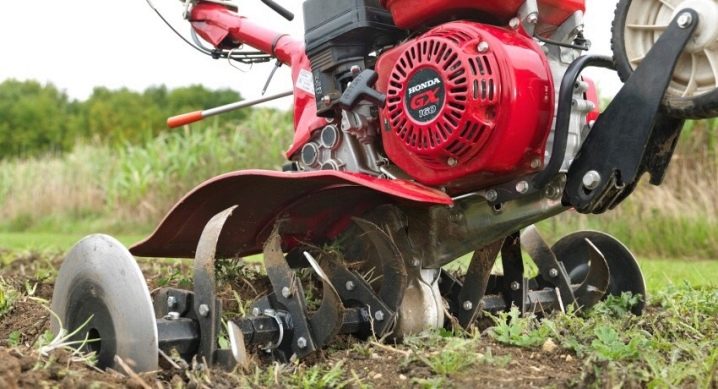
The first examples of motoblocks appeared back in those years when the rapid mechanization of agriculture began to gradually introduce motorized technology into this sphere of human activity. The patent for one of the first models was issued back in 1912, and a few years later the production of such equipment was put on stream by the notorious German company Siemens. Ten to twenty years later, the Germans had competitors in most other large European countries, but after the Second World War, the popularity of such technology in Western Europe has undergone some decline.
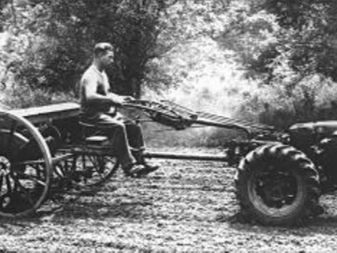
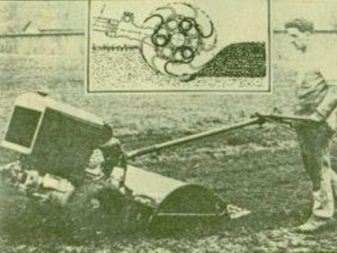
But in the following decades, walk-behind tractors began to gain more and more popularity in countries with a lower standard of living. In the USSR, they have become firmly in use since about the 80s of the last century, and over the next decades they have become insanely popular throughout Asia and Africa. Today, a huge share of this type of equipment is produced in China. The same country is one of the leaders in terms of the number of operated copies.
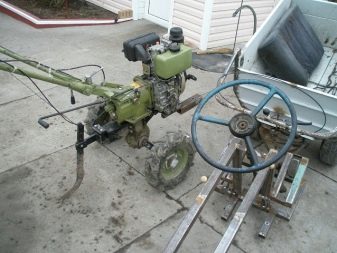
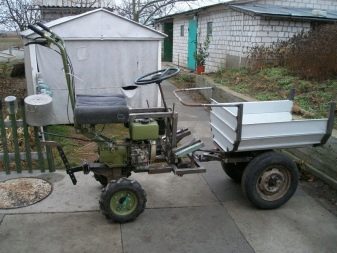
The main components of the mechanism
As befits a moving vehicle, any walk-behind tractor includes a chassis as a base, but it is distinguished from a simple trolley by the presence of at least four more components: an engine, a transmission, as well as aggregation and control systems.
Engines in walk-behind tractors almost always run on liquid fuel, electric ones are still a rarity. Newer models are usually four-stroke. Their two-stroke "brothers" are now considered obsolete.Since the unit is operated by footmen, the engine is equipped with an automatic speed control. By engine power, walk-behind tractors are usually divided into light (up to 5 horsepower) and heavy (from 4 to 10 horsepower), but power over 10 horsepower is very rare.
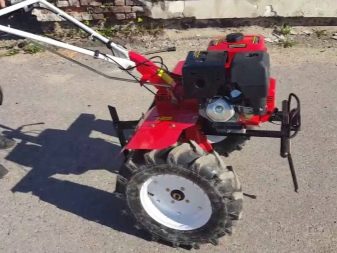
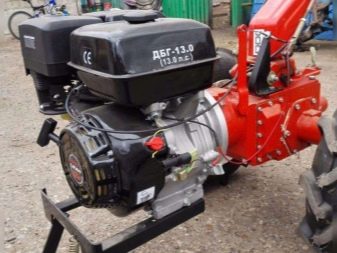
As for the transmission, in motoblocks this mechanism can be of one of four types. The gear transmission, most typical for ordinary tractors, is usually found on large walk-behind tractors. It is good for the ability to reverse, but there are alternative solutions.
So, the gear-worm transmission is valued for its compactness and relatively small weighting of the unit, and therefore it is usually found in light models. The belt-toothed-chain transmission allows you to achieve an increase in the agrotechnical clearance, thanks to which the walk-behind tractors equipped with it are more appropriate in loose soil conditions and are better suited for cultivating vegetable gardens.
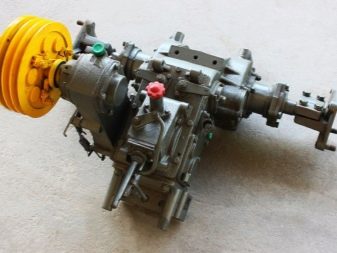
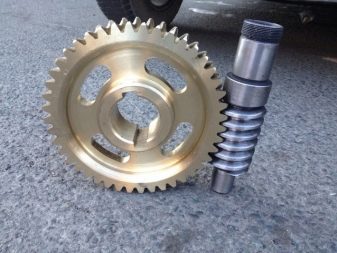
Hydrostatic transmission is one of the innovations. Its widespread use is characteristic mainly of the last decade. They usually choose it for the sake of simplifying transport control, since it is easy to adjust the speed of the unit with its help.
The aggregation system is, in simple terms, special devices that allow you to attach certain agricultural implements to the walk-behind tractor, because without such accessories it is useless. On this basis, pedestrian tractors are divided into two main categories. Motorized cultivators involve the installation of additional equipment directly on the axle. Wheeled walk-behind tractors are equipped with a special bracket on which everything you need is attached to.
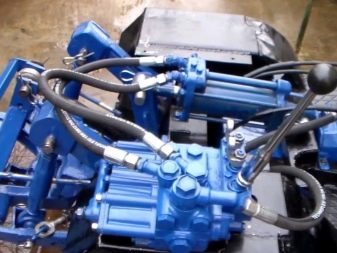
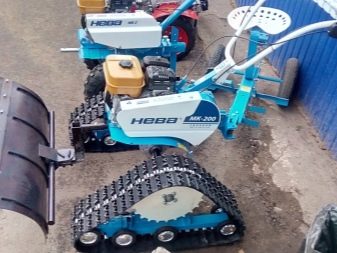
As for the control system, it can be implemented in different ways in different models of individual manufacturers. In most cases, however, the steering rods are used to hold the machine in the correct position and orient it in the right direction. Since both hands of the operator are occupied by these grips during use, all basic functions are controlled from here: the clutch is often located on the left boom, and the throttle on the right. Light models usually do not have any mechanical brake at all; heavy ones also have one on the right boom. As for the more specific controls, they are usually not displayed on the rods - they are located on the same node that they are controlled.


Recently, manufacturers have also paid significant attention to operator safety. Although not all models have at least some of the following, when choosing a good option, it is better to overpay a little for a complete set. Thus, special protective covers above the working cutters do not allow the escaping clods of earth or stones to fly towards the operator. Steering rods are often equipped with an elastic suspension that smooths out engine vibrations, because the latter often provokes various health problems.
A good walk-behind tractor also knows how to automatically disengage the transmission as soon as the operator releases the steering rods. This minimizes the number of accidents. Some manufacturers specifically limit reversing to a speed of no more than 30 cm per second. This avoids running over the operator if he falls.
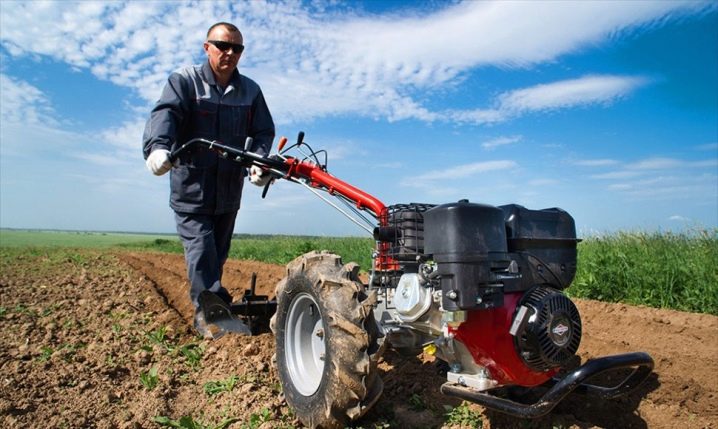
Scope of application
By itself, the walk-behind tractor cannot have any application - it all depends on additional tools that are attached to it and are never supplied in the kit. Accordingly, the functionality of each model depends only on how much it is possible to attach additional components to the main mechanism.
With the help of a walk-behind tractor, you can plow a garden or huddle the beds. Such an application is more common in small areas such as gardens, flower beds or greenhouses, but it all depends on the power of the unit, because, as already mentioned, the most powerful models will pull up to 4 hectares of territory.If necessary, the unit can be used for mowing grass, and even for removing snow. A completely separate way of using motoblocks is the transportation of goods, however, not too heavy and not very far.
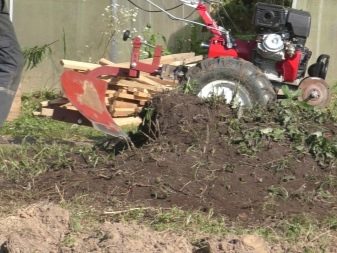

It is clear that not all of the described application methods are suitable for any type of walk-behind tractor. It all depends on the engine power and some other characteristics of the model. For example, the scope of use of light pedestrian tractors is usually limited only to plowing with a milling cutter, the same hiller is not always bought in addition. The medium-power unit is a universal plowing machine; not only a cutter and a hiller are attached to it, but also a small plow with a harrow. If necessary, you can expand the arsenal of tools also with a mower and a light semi-trailer, in addition, such models are usually supplied with replaceable wheels.
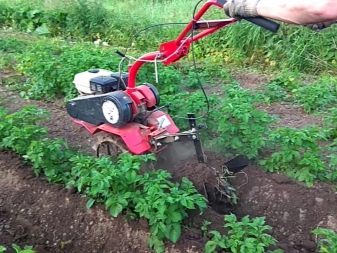
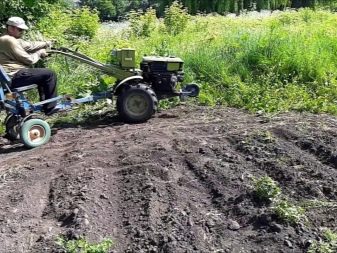
Heavy walk-behind tractors are a universal solution, albeit without replaceable wheels. Snowplows are only fitted to such powerful equipment. Some owners even equip them with a small bulldozer blade, while light motoblocks are simply not able to solve such problems. In addition to all of the above, this technique can also be equipped with a cultivator or rake. Also, when transporting goods, the semitrailer can be loaded more intensively.
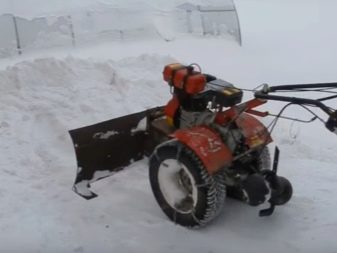
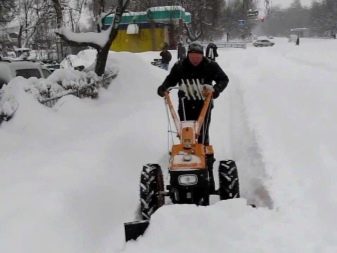
The operation of a walk-behind tractor for transporting goods on a semitrailer or trolley has its own characteristics. Firstly, such equipment is forbidden to be used on public roads, which in itself excludes significant transportation distances. Secondly, the efficiency of such units is relatively low, since the drive wheels of the machine itself are practically not loaded, and all the weight falls on the driven wheels of the bogie. In practice, this means that climbing a mountain or a broken dirt road for a loaded walk-behind tractor is often insurmountable. Therefore, they travel with a load only through the territories of factories, farms and other small flat areas with normal coverage. The motor resource of equipment when aggregated with a bogie is noticeably reduced.
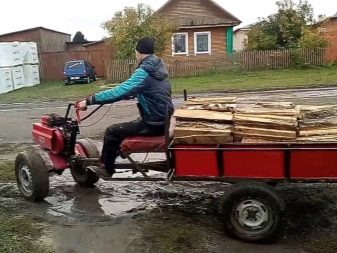
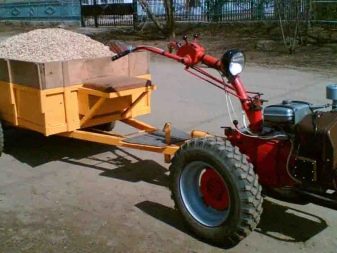
Tips for choosing a walk-behind tractor in the next video.



































































The comment was sent successfully.